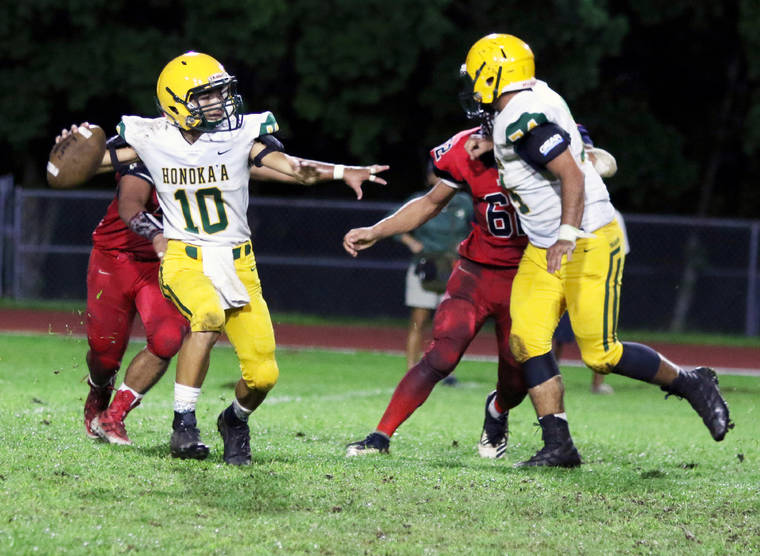After a one-year test run at Division I, Honokaa High football is moving back “where we belong,” athletic director Keith Tolentino said. And for the first time in a decade, BIIF volleyball teams will stay on their side, East or West, during the regular season.
There are still far more possibilities than certainties, but as BIIF athletic directors wait for the Department of Education and state and local leaders to weigh in and reopen facilities, they’re hashing out rough drafts for fall schedules. As coronavirus-induced budget cuts loom, the operative term, as expected, is light.
The league’s remaining Division I football teams (Hilo, Kealakehe, Keaau, Konawaena and Waiakea) likely would play each other once in a regular season consisting of four games now that the Dragons have decided to go back to Division II. Honokaa memorably won a Division I title in 2009, but it failed to qualify for the D-II final for the next nine seasons before going 2-8 in D-I last season under first-year coach Fred Lau.
“Our school has always been D-II,” Tolentino said. “In the past, we tried to pick up some kids. But the bottom line is we feel better at D-II.”
The Dragons will join Kamehameha, Hawaii Prep, Ka’u, Pahoa and Kohala at the lower classification for a likely five-game regular season leading up to the playoffs. In 2019, teams played each other twice within their division.
Volleyball teams could be looking at regular seasons consisting of seven matches, largely staying on their respective sides of the island to cut down on transportation costs.
“We’re hearing that there could be a 50% cut to the amount the state passes down to the schools,” BIIF executive director Lyle Crozier.
As was the case 10 years ago, Honokaa and Laupahoehoe would play with the westside schools and Ka’u would stay with the east during the regular season before Division I and II championships are held.
“For me, I’d rather play everybody, even if they’re a powerhouse,” Tolentino said, “but I certainly see why schools would want to cut down on travel. It’s a totally different world.”
Crozier said the BIIF has a cross-country schedule in place that features approximately seven meets, with a system of “staggered starts for runners” planned to avoid as much physical contact as possible.
Planning for air riflery and bowling are somewhat easier in terms off location. All but one of the schools that participate in air riflery are on the Hilo side, Konawaena. There are only a handful of bowling teams, and the sole facility the BIIF uses is KBXtreme in Kailua-Kona.
In May, the Hawaii High School Athletic Association set Aug. 17 as a target start date for football, and the other five sports, including cheerleading, are set to begin two weeks later. The HHSAA executive board and the BIIF are each scheduled to hold their next meetings Monday.
“We gave the State Department of Education our guidelines, and we’re waiting to hear back as far as parameters and waiting for the superintendent to tell us when we can open the schools,” Crozier said.



